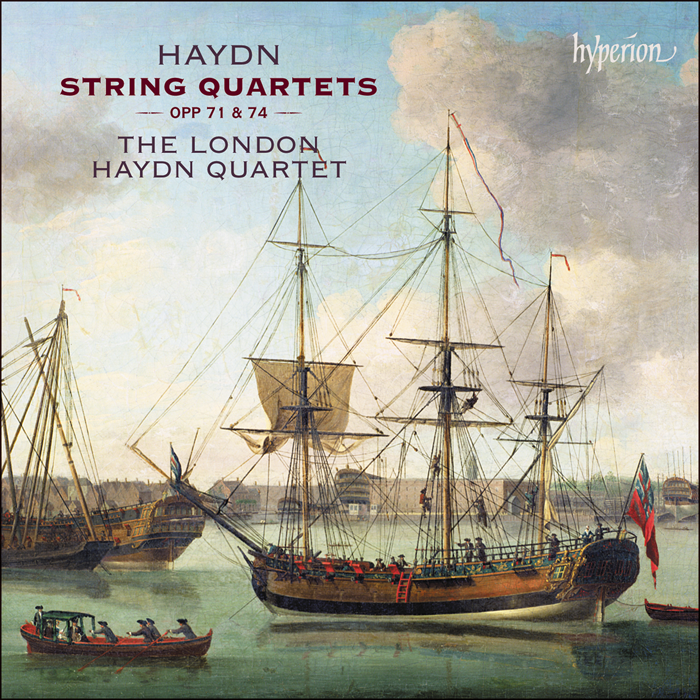Haydn: String Quartets Opp 71 & 74
The London Haydn Quartet
CDA68230
Haydn wrote his six ‘Apponyi’ quartets in 1793, for performance during his second London visit the following year. This is a world in which the members of The London Haydn Quartet are very much at home, and they bring all their usual attentive enthusiasm to these masterpieces.
Behind The Cover
Most of Joseph Haydn's long working life was, of course, spent in Eisenstadt in Austria, in the employ of a succession of four Esterházy princes. But his greatest critical and personal triumphs were the two extended visits he made to England in the 1790s, which consolidated a European reputation and success far beyond that of any other composer of the day; his early biographer Georg August Griesinger even went so far as to say that Haydn 'considered the days spent in England the happiest of his life'. George III and Queen Charlotte attempted unsuccessfully to persuade Haydn to settle in England, offering him a residence in Windsor: he declined, finally returning to Austria in January 1794, and spending the remainder of his life between Eisenstadt and Vienna.
Samuel Scott (c.1702-1772) was London born and bred; his depictions of London life (especially scenes on and around the Thames) remain famous, their vigour and detail conveying an almost photojournalistic quality. Hogarth, whom he appears to have known, was a near contemporary, although there is none of Hogarth's sharp social satire. But both remain, in their very different ways, quintessentially London artists. Scott celebrates what, in an earlier generation, Milton had hymned as 'Tower'd cities … And the busy hum of men' and his extraordinarily vivid evocations of the city's topography portray the urban London of the day as a hub of thriving, purposeful activity.
The selection of Scott's paintings we've chosen as the cover art for most of The London Haydn Quartet's marvellous cycle of Haydn's quartets—now nearing completion, with the Op 76 set due for release in February 2021—feels wholly apposite, demonstrating a real kinship between composer, painter and performers. We feel sure that Haydn and Scott would have approved.

